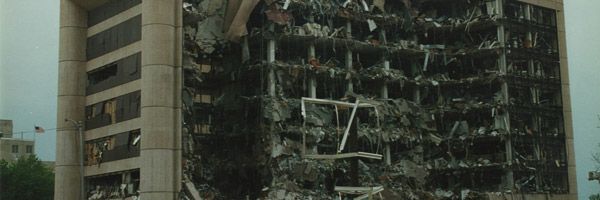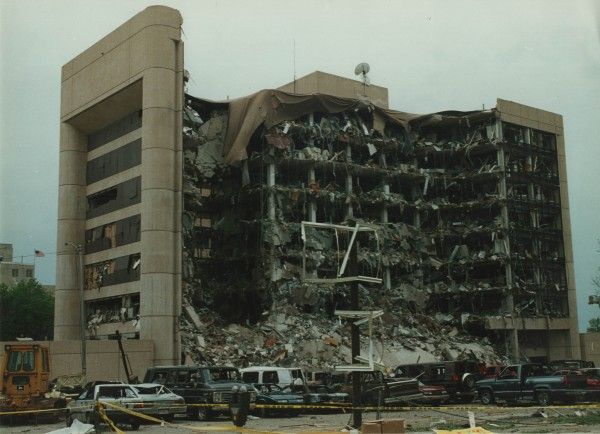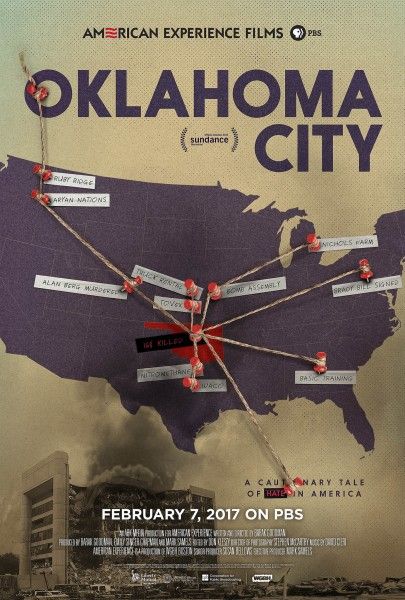[Note: The is a re-post of my Oklahoma City review from the 2017 Sundance Film Festival. The documentary airs on PBS tonight, February 7th, at 9pm ET.]
I was eight years old when the Oklahoma City bombing occurred. I lived in Tulsa, Oklahoma, just over 100 miles away, but the event shook our state—and our nation—to its core. The destruction of the Alfred P. Murrah Federal Building resulted in the loss of 168 souls, and marked the most deadly terrorist attack in United States history. When all was said and done, it was one of our own that was the culprit: a white war veteran named Timothy McVeigh. But while McVeigh carried out the act and is absolutely to blame, the fires of his anti-government leanings were being stoked for some time. As filmmaker Barak Goodman’s expertly crafted documentary presents, the Oklahoma City bombing was the climax of a series of events that invigorated white nationalist sentiment across the country, leading McVeigh to take deadly action.
Oklahoma City begins with the bombing itself, featuring testimony interviews from eyewitnesses, survivors, and parents of fallen children. But the film is not a play-by-play of how the bombing was planned and executed, and the eventual arrest of McVeigh and two others. The movie does cover these points in great detail, but its focus in on contextualizing these events, which are seeded back in 1992 with the Ruby Ridge incident. As the documentary progresses, we see how white nationalist sentiment grew fiery and passionate after a pair of federal screw-ups on the national stage, spurring McVeigh to strike back.
The Ruby Ridge standoff occurred in 1992 Idaho, where the federal government was keeping tabs on an Aryan Nations compound. Through a series of dumb mistakes and questionable actions, a standoff occurred at the nearby home of Aryan Nation sympathizer Randy Weaver that resulted in the death of his wife Vicki Weaver, his son Sam Weaver, and U.S Marshal Bill Degan.
As the documentary shows, this incident gave ammunition to white nationalists across the country who were afraid the federal government was coming to take their guns, and who were growing resentful of the so-called “extinction” of the white race (spoiler alert: 25 years later white people still exist and still run almost everything).
The film features interviews with some of those who were at Ruby Ridge, offering first-hand accounts of one of the U.S. government’s more embarrassing screw-ups, but the film also highlights interviews with historical and sociological experts. As one law enforcement agent says in the film, at this point in time the White Nationalist movement gravitated around two major things that they claimed the government was trying to take away: guns and religion.
This offers a segue into the second major event that spurred white nationalists to action: Waco. In 1993, a famous siege took place in Waco, Texas where Branch Davidian David Koresh was leading a swath of followers at a remote compound. When the ATF discovered that Koresh and his followers were stockpiling massive amounts of weapons and ammo, they decided they were going to raid the compound. Loose lips from a single agent lead to the Branch Davidians being tipped off, and what was planned as a raid soon turned into a standoff. Following the deadly first confrontation, a siege ensued for over a month. Infamously, it ended with Koresh setting the compound on fire and killing himself and 75 others.
As the documentary shows, McVeigh himself drove in to witness the standoff at Waco, where he sold bumper stickers warning of the government’s desire to take away citizens’ guns (spoiler alert number 2: the government still has not taken away everyone’s guns). In the wake of Waco, conspiracy theorists began spreading lies that it was actually the feds that started the fire at the compound, killing everyone inside, even though there’s plenty of evidence (including audio from those inside) that Koresh himself set the place ablaze.
This misinformation, coupled with the optics of two deadly assaults by the federal government, heavily influenced McVeigh’s already troubling anti-government thoughts, and he set about concocting a return of fire that, unfortunately, turned out to be the Oklahoma City bombing.
What Goodman’s documentary does so well is add much-need (and relevant) context to the Oklahoma City bombing, which in hindsight has been overshadowed a bit by the more deadly attack in New York City on 9/11. The film never feels like it’s bouncing from event to event, and instead flows elegantly by constantly returning back to the attack in OKC. First-hand accounts and expert interviews are crucial to expressing the documentary’s points in an influential manner, and they work wonderfully.
And the documentary feels wildly relevant at this point in time, when White Nationalist sentiment continues in parts of the country, gaining traction with every David Duke retweet. The film is a reminder that thoughts and words have consequences, and that this kind of racist, hateful rhetoric and belief is not simply all talk. If you invoke enough hatred, enough anger, and enough resentment from a crowd of riled-up gun-owners, you’re just asking for someone to do something violent.
The Oklahoma City bombing happened over 20 years ago, but its effects will not be forgotten. Innocent lives were taken, forever altering the lives of those directly in the devastation’s path. But the bombing also serves as a reminder of the terrible consequences of hate, unchecked anger, and misinformation. Is every angry white nationalist going to blow up a building? Probably not. But ignoring that kind of rhetoric is dangerous. Non-Americans attacked our country on 9/11, but let us not forget that less than a decade previously, the terrorist was one of our own.
Rating: A-
Oklahoma City premieres on PBS on February 7th.



